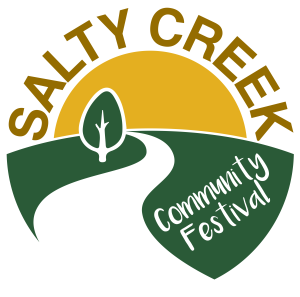Making a festival sustainable
Sammie and Hayden want to run a sustainable festival, but what does that mean? Check out how they explain sustainability to the volunteers and some of the things they plan to do to make the festival environmentally friendly…
![]()
![]()
Sammie and Hayden, the lead organisers of the Salty Creek Community Festival, want to make sure the event is as sustainable as possible. It’s a very important issue to them, and their original pitch for the festival was that it would promote sustainability.
As they’re explaining this to their volunteers, however, they quickly realise that not everyone knows what sustainability means. Sammie offers to put together a short presentation for their volunteers, to go over the basics of what sustainability is and why it’s important.
Sammie and Hayden have modelled their own approach to sustainability for the festival based on the United Nations’ (UN) definition. Sammie explains this definition to the volunteers.
Read the United Nations’ definition of sustainability below.
Sustainability is:
‘meet[ing] the needs of the present without compromising the ability of future generations to meet their own needs.’ (World Commission on Environment and Development 1987)
An example of this might be ensuring we have enough clean water for everyone to drink right now, without using too much so that our children and grandchildren cannot access clean water in the future.
Organisations and governments are starting to think more seriously about sustainability – not just in terms of the environment, but global society and the economy as well. The United Nations has become one of the leading authorities in sustainable development.
Drag the slider to see Sammie’s presentation about the UN and SDGs.
Now that the festival volunteers understand the basic idea of sustainability, it’s time for Sammie and Hayden to explain how they plan to make the festival more sustainable. Sammie and Hayden have put together some ideas on how they can ensure their festival is ‘green’ and, for inspiration, included examples of other festivals in Australia that have used these methods.
Read through the cards to see what Sammie and Hayden plan to do to make the Salty Creek Community Festival more sustainable. Select ‘turn’ to see how other festivals have used these methods.
Reflect
These are just some of Sammie and Hayden’s ideas to make the event sustainable. There are lots of other things they can do as well.
- Can you think of other things at a local festival that might negatively impact the environment?
- For example, paper tickets and flyers create paper waste. These may not always be recycled properly, or simply be left on the ground for the volunteers to clean up.
- How might Sammie and Hayden minimise those impacts?
- For example, to avoid paper waste, Sammie and Hayden might make the tickets digital-only, and only promote the festival through social media and with digital signage.
Sammie and Hayden can see that the volunteers now have a good understanding of what sustainability is and how it can be applied to the Salty Creek Community Festival. They are confident the volunteers can help them achieve their goal and also feel good that they’ve helped the volunteers improve their sustainability literacy.
Whether you’re studying or working, it’s essential to have good sustainable literacy. Many university courses are incorporating sustainability into their course material, and companies are starting to think more about how their work impacts sustainability. Sustainability is something that concerns all of us, not only in work and study, but in our day-to-day lives.

- To make sure their festival is sustainable, Sammie and Hayden are minimising festival waste with a systems thinking approach. (15 to 20 minutes)
- A volunteer is interested in being more sustainable in his day-to-day life. Check out Sammie’s advice on creating your own sustainability goals. (10 minutes)
Learn more on Learning Lab
- Learn more about the basics on the Sustainability page. (10 minutes)
- Discover more about the history of the UN and SDGs by exploring the United Nations Sustainable Development Goals (SDGs) tutorial. (30 to 40 minutes)
- Check out the Sustainable industries: festivals and events page to learn more about making events greener. (3 to 5 minutes)
A person who possesses the knowledge, skills, and mindset of sustainability literacy recognises the importance of building a sustainable future. They can make informed and effective decisions to this end by considering a balance between social wellbeing, economic stability, and care for the environment.

